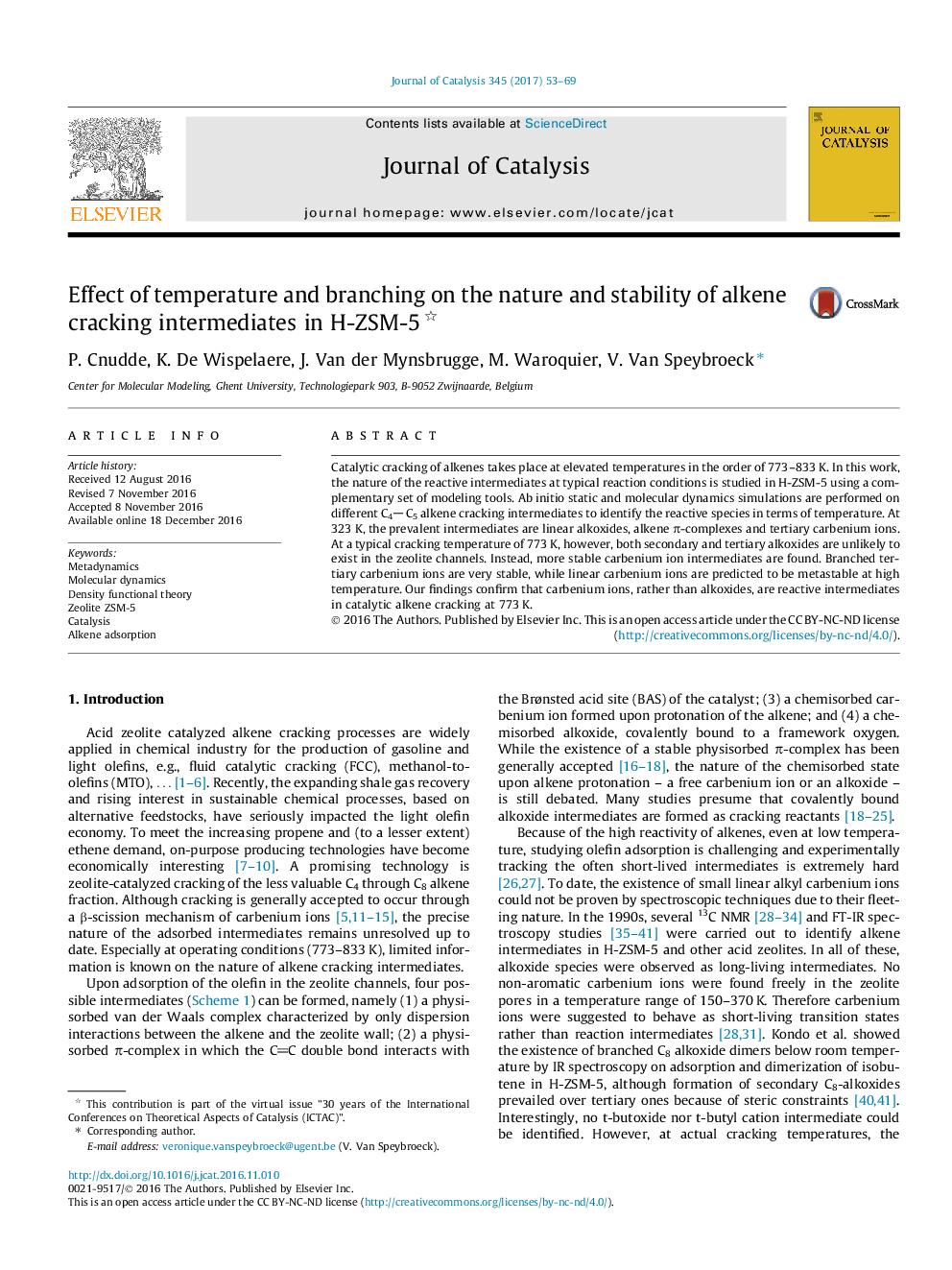| Article ID | Journal | Published Year | Pages | File Type |
|---|---|---|---|---|
| 6455626 | Journal of Catalysis | 2017 | 17 Pages |
â¢At 323 K, Ï-complexes and linear alkoxides are very stable intermediates.â¢At high temperature, the Ï-complex is competitive with the freely adsorbed alkene.â¢Secondary alkoxides are unstable at high T; Tertiary alkoxides are unstable at low T.â¢Linear, secondary carbenium ions are short-living at 773 K.â¢Tertiary carbenium ions are very stable with long lifetimes at all temperatures.
Catalytic cracking of alkenes takes place at elevated temperatures in the order of 773-833Â K. In this work, the nature of the reactive intermediates at typical reaction conditions is studied in H-ZSM-5 using a complementary set of modeling tools. Ab initio static and molecular dynamics simulations are performed on different C4 C5 alkene cracking intermediates to identify the reactive species in terms of temperature. At 323Â K, the prevalent intermediates are linear alkoxides, alkene Ï-complexes and tertiary carbenium ions. At a typical cracking temperature of 773Â K, however, both secondary and tertiary alkoxides are unlikely to exist in the zeolite channels. Instead, more stable carbenium ion intermediates are found. Branched tertiary carbenium ions are very stable, while linear carbenium ions are predicted to be metastable at high temperature. Our findings confirm that carbenium ions, rather than alkoxides, are reactive intermediates in catalytic alkene cracking at 773Â K.
Graphical abstractDownload high-res image (215KB)Download full-size image
